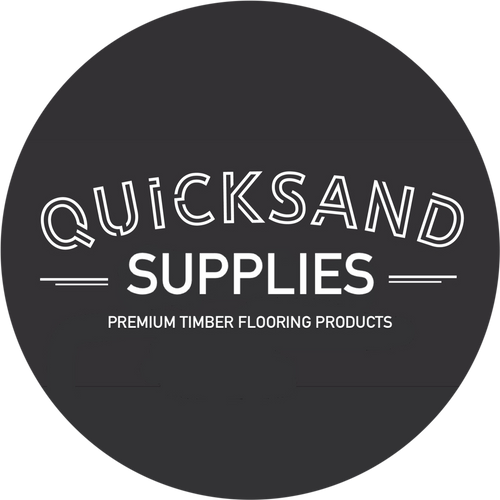DIY Home Renovation: Refinishing Timber Floors
Timber floors look incredible and can last for decades. You can extend the lifespan of timber floors even further by refinishing them every 10 years or so.
Refinishing a timber floor is a big job, but it’s DIY-friendly if you don’t mind getting your hands dirty. If you want to refinish your floors and save some money while you’re at it, we’re going to go over the DIY process for refinishing timber floors.
You can also watch our 'How to Sand a Floor' tutorial:
How to Refinish Timber Floors
1. Prepare Your Home
Preparation is the key to any renovation project.
You’ll need to remove furniture, rugs and any other items on the floor in the rooms you are refinishing.
Next, the floors need to be thoroughly vacuumed. Vacuuming removes dirt and grit that may cause scratching during the sanding process.
2. Initial Sanding and Edging
Sanding is the trickiest part of DIY floor refinishing. Don’t attempt to refinish your floors using hand tools alone! We recommend hiring a floor sander and floor edger from Bunnings or another hire company.
It’s really important to use good quality sandpaper, we highly recommend using our top of the range Ceramic Inferno Red range. This has been specially made to fit hire machines. A good sandpaper will save you a lot of time and give you the best possible finish!


Sanding is completed in multiple passes to remove the old coating and ensure an even finish. During the first pass you need to:
- Sand the entire floor using a 40 grit belt on the floor sander. Work along the length of the grain. Make sure the sander is always moving – avoid standing still or allowing the sander to dig into the floor.
- Sand the edges of the room using a 60 grit pad on the floor edger.

3. Fill Any Gaps
It’s normal for timber floors to have gaps. Filling these gaps will improve the appearance and quality of your final finish. However, if your floor has a lot of movement, it might be best to leave these gaps unfilled to allow for expansion and contraction.
Look for gaps, cracks, scratches and nail holes that need to be filled. These can be covered using one of our timber floor filling products, designed to blend seamlessly with your floor and provide a professional-quality finish.
Wood filler is applied with a putty knife. Use the putty knife to squeeze filler into each gap and then smooth the surface.
Choose a wood filler that’s a close match to the colour of the freshly sanded timber. This ensures the filler blends in nicely once the floor is refinished.

4. Final Sanding
Once timber filler has been applied, we can now complete the second and third pass of sanding:
- Second pass:
- Sand the entire floor using a 60 grit belt on the floor sander. Continue working along the length of the grain.
- Sand the edges of the room using an 80 grit pad on the floor edger.
- Third pass:
- Sand the entire room with a 100/120 grit belt on the floor sander. Continue working along the length of the grain.This will essentially buff the floor and leave it as smooth as possible ready for coating.
- Buff the edges of the room using a 100 grit pad on an orbital sander.
- Use a hand scraper or a multi-tool with a triangle sanding attachment to sand any areas that you were unable to reach with the edger.
It’s important to sand the entire floor to the same level (or as close as possible). This can be tricky to achieve around the edges of the room.
If you’re struggling to get the edges level, take a torch and lay it on the ground. Light from the torch will shine across the floor and highlight any high or low spots that need attention.
Vacuum the floor thoroughly once sanding is complete. You may need to make multiple passes to collect any sawdust that’s trapped in gaps, corners and between floorboards.
5. Apply Your New Finish
You can finally apply your new finish!
The exact process depends on the product you chose. For DIY jobs, we recommend a water based polyurethane finish such as AquaSeal by Berger-Seidle or a hard wax oil like Titan from Ciranova.
Whatever product you choose, you can use a brush to apply the product around the edges of the room and a short-haired roller for everything else. Work along the length of the grain wherever possible.
Follow the manufacturer’s directions regarding the number of coats. We recommend 3 coats for most timber floors, but you may need more if the timber is especially dry.
Refinish Your Timber Floors With Products From Quicksand Supplies!
Refinishing timber floors is a DIY-friendly project! You’ll need to hire a few specialist tools, but all it requires is some elbow grease and a few products from Quicksand Supplies.
Quicksand Supplies provides timber refinishing products to DIY customers across Australia. We stock a range of high-quality interior floor coatings and tools that make it easy to refinish or maintain your timber flooring.
We have decades of experience in the floor sanding industry. The products we supply are the ones we use ourselves, so you can trust that they’ll leave your floor looking like new.
You can browse our range online at any time, or contact our team for assistance. We’re happy to discuss your project and recommend the best products for the job!

